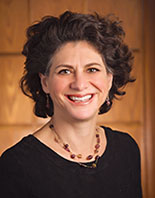
Yale’s current push in the sciences builds on a tradition of scientific exploration and education that stretches more than two centuries into the university’s history. Our faculty in the arts and sciences have long been leaders of this charge, changing the world through their research while cementing Yale’s standing as an extraordinary institution for the study of science at both the undergraduate and graduate levels.
Two hundred fifteen years ago, in 1802, Yale’s eighth president, Timothy Dwight IV (“The Elder”), appointed the first professor of science in the United States: Benjamin Silliman. Silliman ushered in an era of growth and innovation, developing both the arts and the sciences across Yale’s campus. He was a driving force behind the creation of the medical school in 1810, the art gallery (the first of any university in the country) in 1832, and the graduate and scientific schools in 1847. Yale was the first U.S. institution to award the doctor of philosophy degree, and the first to grant a Ph.D. in science, issued to Arthur Williams Wright, an experimental physicist, in 1861. Two years later, Yale awarded the first North American Ph.D. in engineering to Josiah W. Gibbs, known as the father of chemical thermodynamics, whom Albert Einstein dubbed “the greatest mind in American history.” Both Wright and Gibbs went on to serve as longtime members of Yale’s faculty.
Many of our landmark buildings and spaces pay tribute to Yale’s illustrious scientific tradition. The spectacularly transformed Wright Lab carries forward the name of Arthur Williams Wright and celebrates his record of expanding the limits of scientific understanding. Gibbs Walk on Science Hill honors Josiah Gibbs’s pathbreaking mathematical and scientific work to illuminate the deep structures of nature. Yale’s Marsh Botanical Garden honors the legacy of the 19th-century paleontologist and Yale faculty member Othniel Charles Marsh, whose work inspired his uncle, philanthropist George Peabody, to found the museum that bears his name. Berkeley College recognizes a philosopher of the Enlightenment and patron of the university—George Berkeley—known for his 1709 empirical theory of vision. Ezra Stiles College bears the name of Yale’s seventh president, an amateur scientist who corresponded with Thomas Jefferson and with Benjamin Franklin (who helped Stiles to develop Yale’s library collection, and for whom one of the two newest residential colleges is named) and conducted the first electrical experiments in New England; its neighbor, Morse College, is named for the 1810 graduate best known as an inventor of the telegraph and the creator of “Morse Code.” The newly renamed Grace Hopper College shines a spotlight on the trailblazing computer scientist who earned her Ph.D. in mathematics from Yale in 1934.
Today, the FAS sciences comprise some 250 faculty members across 14 departments spanning the biological and physical sciences and engineering and applied sciences. They graduate some 450 undergraduate majors annually and account for a staggering 15,000 course enrollments each year. In their teaching, they are helping to shape the next generation of scientific discovery. And in their research, they are carrying forward Yale’s proud history of changing the world by pushing the frontiers of human knowledge.